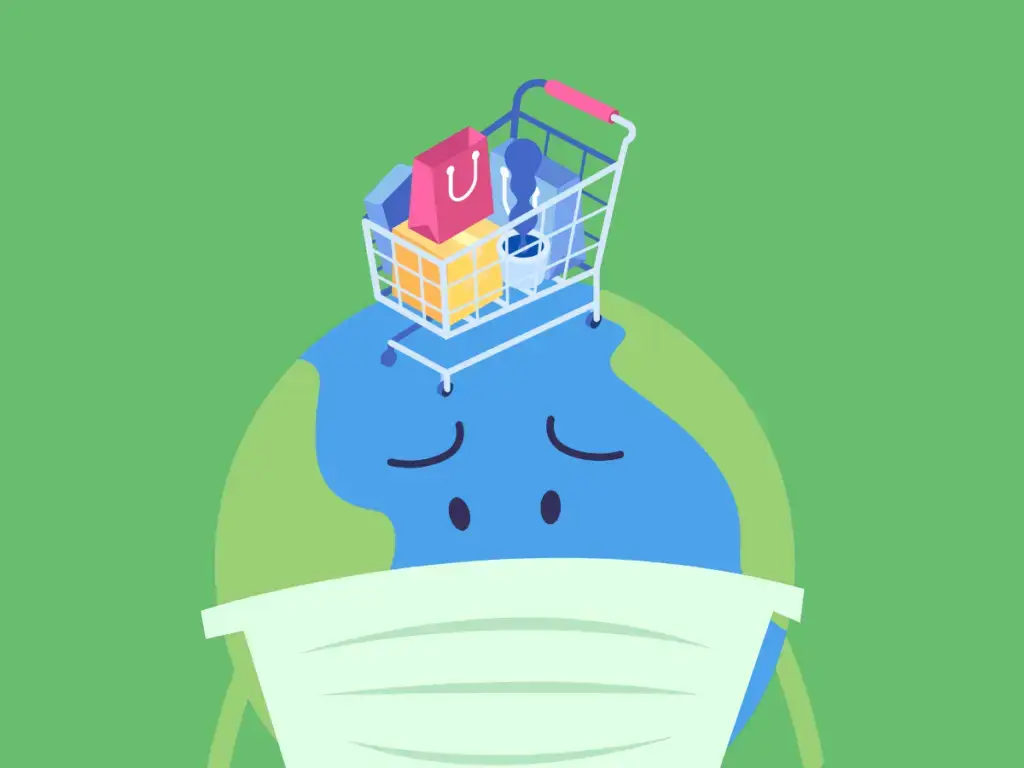The ongoing coronavirus pandemic is introducing a new generation of consumers to online shopping. Worldwide lockdowns have forced retailers to temporarily close down their doors.
The ongoing coronavirus pandemic is introducing a new generation of consumers to online shopping. Worldwide lockdowns have forced retailers to temporarily close down their doors. In response, consumers have increasingly turned to online shopping to fulfill basic needs. Retailers able to shift operations online, have been able to reap the benefits from the increase in the demand for webshops. Quick thinking and adaptability has allowed many businesses to weather the storm better than anticipated. During the peak times in the pandemic, many businesses managed to stay profitable by adapting to the rapidly changing market conditions.The crisis encouraged webshop managers to optimize their website, streamline logistics, offer additional payment methods, improve customer service, and boost their online presence. While this is good news for the ecommerce industry, online retailers should not ignore the long term implications of the pandemic. Although we have seen an increase in online shopping recently, easing restrictions could have shoppers rush back to brick-and-mortar stores. Webshop managers should plan for the future to ensure long-term business growth. Here is what we can expect from the future after coronavirus:
Increase in online sales
Store closures have forced many new customer segments to embrace ecommerce. In the Netherlands, only 7% of online shoppers are above the age of 45. For many people in this age group, technology presents a barrier to entry for online shopping. Research shows the older segment of consumers finds online shopping difficult. Older consumers are generally less technologically oriented and less likely to experiment. They are fearful of providing personal information online (i.e. credit cards numbers) and falling victim of fraud. Unfortunately, older adults are at higher risk from COVID-19 forcing them to adopt online shopping as a safer alternative during the pandemic. As the Netherlands begins to slowly ease restrictions, consumers will surely return to stores when they reopen. On the bright side, a significant part of the population has now been forced to learn how to shop online. The convenience will likely persuade some of them to continue online shopping in the future. Although online sales are due to decline when stores reopen, they are unlikely to return to pre-coronavirus levels.
Improved fulfillment strategies
The pandemic fast tracked the adoption of online shopping. Demand for certain products skyrocketed virtually overnight. As a result, businesses realized the viability of building and maintaining a strong online presence. The increase in demand, however, placed a strain on the supply chain. In fact, some fulfillment centers have proven inefficient and have struggled to keep up with the flow of orders. The outcome has been an increased turnaround time and lost business opportunities. Moving forward, we can expect a revamp of distribution centers and scalable infrastructure. Webshop will have to evolve to adapt to a more dynamic, high-frequency retailing environment. Unfortunately, most small/medium businesses rely on third party fulfillment centers to ship products out to customers. This presents a unique challenge – how can you improve your shipping strategy? The first step will be implementing operational transparency policies. It will help keep customers informed about the status of their order. Accomplishing this will require distribution centers to implement tracking technology to capture shipping data and provide updates throughout the process. When customers are not well informed, they tend to appreciate less the value created by the company. Similarly, when customers don’t know the steps required to ship an item, they are more likely to become frustrated with delivery delays. A great example of how using operational transparency can improve customer experience is Dominos. If you’ve ever ordered online from the pizza chain, you might have noticed the progress bar at the top of the screen. It tracks your pizza from the moment you place the order to the time your meal is delivered. Additionally, you get updates when your pizza is being prepared, baked, and packaged.
It’s survival of the fittest!
In business, like in nature, you must adapt to survive. Finding success during this crisis required a dynamic business strategy. Store closures challenged traditional businesses to find alternative ways to remain profitable. In fact, current market conditions still favor webshops. Brick-and-mortar stores need to adhere to strict limits on the number of customers who can visit the store. Naturally, these measures constrain the profitability of retailers. One way to dampen the effects of the crisis is for businesses to move online. The goal is to shift from a reactive to a proactive approach. It’s clear that online shopping will continue to grow. Although brick-and-mortar stores will not disappear completely, a more technologically oriented market will certainly increase the demand for webshop.
Embrace the shift to online shopping with confidence
Build a powerful WooCommerce webshop with enhanced features using plugins. Plugins can be powerful tools to help you increase your store’s reach, build customer trust, manage your inventory, and optimize payments on your website. Woosa offers high quality and cost effective plugins for your webshop. We can help you develop a plugin tailored to your needs. Reach out to us for more information.



